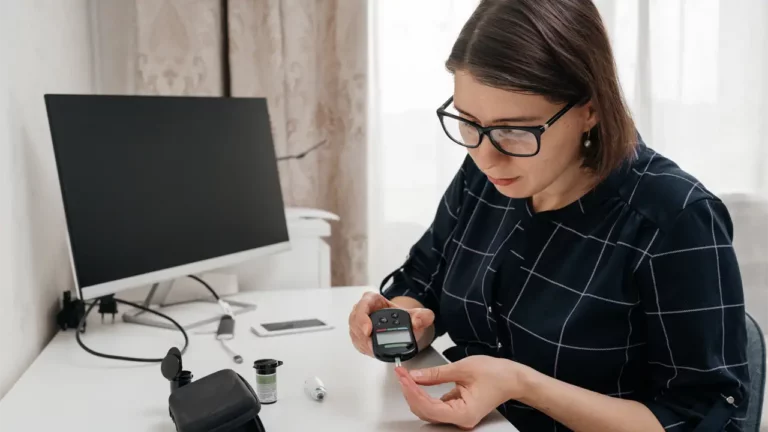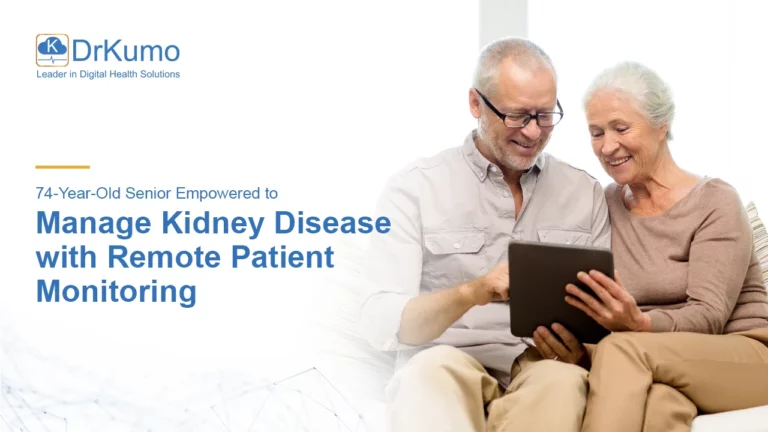Telehealth has become an integral part of modern healthcare delivery. For clinics across the United States, launching a virtual care program offers a powerful way to enhance patient access, improve care continuity, and streamline operations. However, a successful launch requires more than just a subscription to a software platform. It demands a methodical approach that addresses legal, technical, and operational considerations.
This guide provides a foundational 5-step checklist for clinic administrators and providers planning to implement telehealth services, ensuring a launch that is compliant, efficient, and patient-centered.
Step 1: Navigate the Legal and Regulatory Landscape
Before any technology is chosen or workflow is designed, it is imperative to establish a solid legal and regulatory foundation. The rules governing telehealth are complex and vary by location and payer.
A. Confirm HIPAA Compliance: The Health Insurance Portability and Accountability Act (HIPAA) is the cornerstone of patient privacy. Your telehealth solution must ensure the confidentiality and security of Protected Health Information (PHI). This involves selecting a technology vendor that provides end-to-end encryption and is willing to sign a Business Associate Agreement (BAA). Administrative safeguards, such as policies dictating who can access PHI, and physical safeguards, like securing the devices used for telehealth, are equally important.
B. Understand State-Specific Laws: Telehealth practice is regulated at the state level, creating a patchwork of different rules. Key areas to investigate for every state where your patients are located include:
- Provider Licensing: Most states require a provider to be licensed in the state where the patient is physically located at the time of the service. Interstate compacts, like the Interstate Medical Licensure Compact (IMLC), can simplify this process for physicians in participating states.
- Informed Consent: Many states have specific requirements for obtaining and documenting patient consent for telehealth visits, which may differ from in-person consent.
- Prescribing Rules: Regulations for prescribing medications via telehealth, particularly for controlled substances, vary significantly. While federal flexibilities enacted during the public health emergency have been extended, state-level laws and pharmacy board regulations must also be followed.
C. Verify Reimbursement Policies: Payment is a critical component of sustainability. Policies differ between Medicare, state Medicaid programs, and private insurers. Research the specific requirements for each, including which services are covered, what CPT codes to use, and whether specific modifiers (like 95 or FQ) are required. Many private payers now reimburse for telehealth at parity with in-person visits, but it is essential to confirm this directly with each contracted payer.
Step 2: Select the Right Technology Solution
The technology you choose is the foundation of your telehealth service. The goal is to find a platform that is secure, user-friendly for both patients and providers, and integrates smoothly into your existing clinic operations.
A. Evaluate Key Features: Look for a platform that aligns with your clinical needs. Essential features include high-quality video and audio, secure messaging for communication, and patient scheduling capabilities. A crucial consideration is EHR Integration. A platform that integrates with your Electronic Health Record (EHR) system can significantly reduce administrative burden by automating data entry, appointment logging, and billing processes.
B. Assess Hardware Requirements: Determine the necessary hardware for both the clinic and the patient. For the clinic, this typically includes a reliable computer with a high-quality webcam, microphone, and a stable, high-speed internet connection. For patients, the solution should be accessible and have minimal barriers. Platforms that are browser-based and do not require patients to download a separate application often lead to higher adoption rates.
C. Scrutinize Security and Data Privacy: Beyond the BAA, inquire about the vendor’s security protocols. Look for information on data encryption standards (both in transit and at rest), server security, and access controls. A reputable vendor will be transparent about its security architecture and its compliance with HIPAA standards.
Step 3: Integrate Telehealth into Clinical Operations
A common challenge in telehealth implementation is treating it as a standalone service rather than integrating it into existing practice workflows. To ensure efficiency and a seamless experience, you must thoughtfully adapt your existing workflows.
A. Adapt Administrative Workflows: Review and modify your processes for patient intake, scheduling, and follow-up. How will you schedule a virtual visit? How will you collect co-pays? How will front-desk staff triage patients between in-person and virtual appointments? Clearly defining these new workflows for your administrative team is essential.
B. Develop Clinical Protocols: Not all appointments are suitable for a virtual format. Establish clear clinical protocols that guide providers and schedulers on which visit types can be conducted via telehealth. Furthermore, develop standardized guidelines for conducting virtual examinations. This includes instructing patients on how to assist with the exam (e.g., using a flashlight to show their throat) and understanding the limitations of a virtual assessment.
C. Modify Documentation and Billing Processes: Ensure your providers are trained on the specific documentation requirements for telehealth visits, which should be as thorough as an in-person encounter note. Your billing team must be proficient in using the correct Place of Service (POS) codes (typically POS 02 or 10) and any required telehealth modifiers to prevent claim denials and ensure proper reimbursement.
Step 4: Implement a Comprehensive Training Plan
The successful adoption of telehealth hinges on the comfort and proficiency of your entire team. A proactive training plan can mitigate technical challenges and improve the quality of virtual care.
A. Ensure Technical Proficiency: All staff, from front-desk personnel to clinical providers, should be trained in how to use the telehealth platform. This includes scheduling appointments, launching a video call, and managing patient communications within the system.
B. Cultivate “Webside Manner”: Effective virtual care requires a unique set of communication skills, often called “webside manner.” Train providers on best practices such as looking directly into the camera to simulate eye contact, using clear and concise language, and actively confirming patient understanding.
C. Prepare for Troubleshooting: Technical issues will inevitably arise. Develop a simple troubleshooting guide for common problems like poor audio/video quality or connection issues. Designate a point person or a clear protocol for escalating technical problems that staff or patients cannot resolve on their own.
Step 5: Plan a Strategic Launch and Drive Patient Adoption
Once you have the legal, technical, and operational frameworks in place, the final step is to introduce the service to your patients and support them in using it.
A. Create a Communication Plan: Inform your existing patients about the new telehealth service far in advance of the launch. Use multiple channels, such as your website, patient portal messages, emails, and in-office signage, to explain the benefits of virtual visits and the types of appointments available.
B. Develop User-Friendly Guides: Do not assume patients are familiar with telehealth technology. Create simple, easy-to-understand guides—both written and video—that walk them through the process of booking and joining a virtual visit. This should include tips on preparing for their appointment, such as finding a quiet, private space and ensuring they have a good internet connection.
C. Establish a Patient Support System: Offer clear channels for patients who need help. This could be a dedicated phone number or email address for technical support in the initial phase. A patient who struggles with technology during their first attempt may be hesitant to try again, making robust initial support crucial for long-term adoption.
Implementing telehealth is a strategic initiative that, when done correctly, can provide immense value to both your clinic and your patients. By following this structured checklist, you can build a program that is not only technologically sound but also compliant, operationally efficient, and positioned for sustained success.
How DrKumo Supports Telehealth Service Implementation
When clinics move from planning to practice, choosing the right technology partner can determine whether telehealth becomes an add-on or a fully integrated model of care. DrKumo provides a robust foundation for clinics that want to launch compliant, secure, and scalable telehealth services.
As a URAC-certified leader and one of only four vendors awarded a $1.032 billion U.S. Department of Veterans Affairs contract, DrKumo sets the benchmark for secure digital health solutions. Its Remote Patient Monitoring (RPM) and Disease Management Protocols (DMPs) are built on HIPAA, FIPS 140-3, and VA Directive 6500 standards, ensuring both patient safety and regulatory compliance.
Clinics using DrKumo benefit from:
- Seamless Technology Integration: Real-time physiologic data streaming from FDA-cleared medical devices—such as blood pressure monitors, glucometers, and pulse oximeters—directly into a HIPAA-compliant provider console.
- Operational Efficiency: Automated clinical and billing reports, timestamped records, and secure EHR-compatible workflows that reduce administrative burden.
- Patient Empowerment: User-friendly devices and mobile applications that allow patients to monitor their conditions confidently from home.
- Cybersecurity-First Approach: Federal-level data protection protocols that safeguard patient data and eliminate risks associated with foreign data routing.
By incorporating DrKumo into your telehealth strategy, clinics can move beyond compliance to create a future-ready care model that improves outcomes, lowers costs, and strengthens patient trust.
Takeaways
Launching a telehealth service is not simply about adopting new software, it’s about creating a sustainable, patient-centered care model that is legally compliant, technologically secure, and operationally effective. By following the structured 5-step checklist and leveraging proven partners like DrKumo, clinics can confidently bring their virtual care vision to life.
Ready to transform your clinic’s telehealth capabilities? Contact DrKumo today to learn how their cybersecurity-first platform can help you launch and scale your virtual care program.
Disclaimer: This blog is for informational purposes only and does not constitute legal, financial, or medical advice. Clinics should consult qualified professionals regarding regulatory compliance, reimbursement, and clinical decisions before launching a telehealth service.








